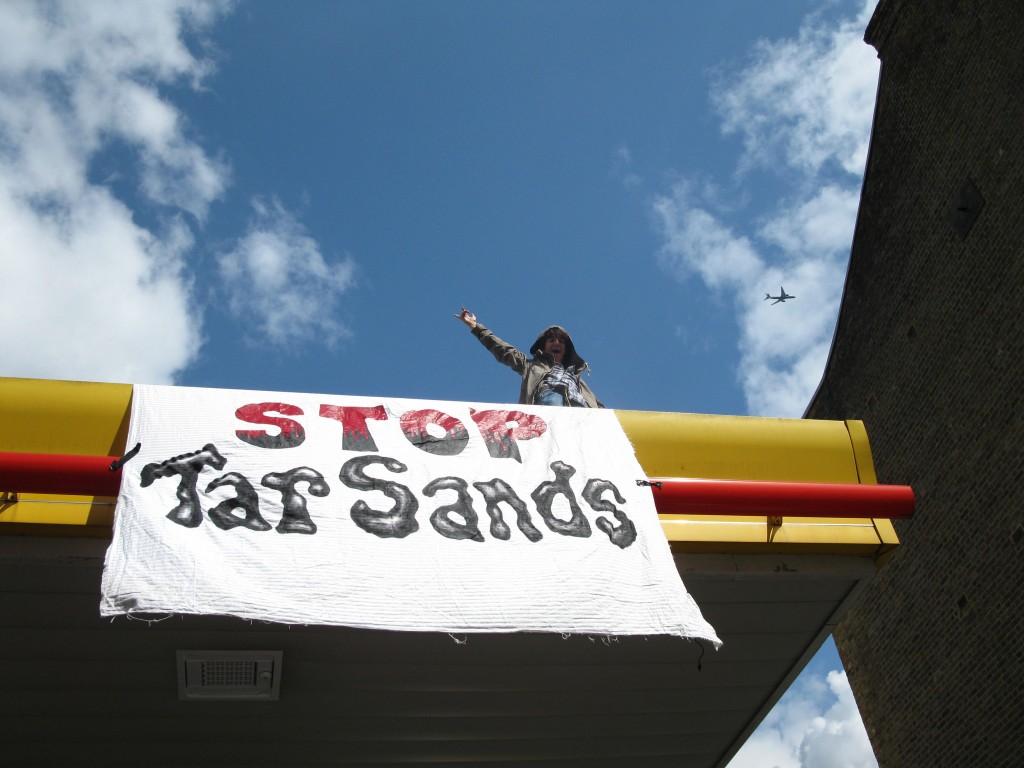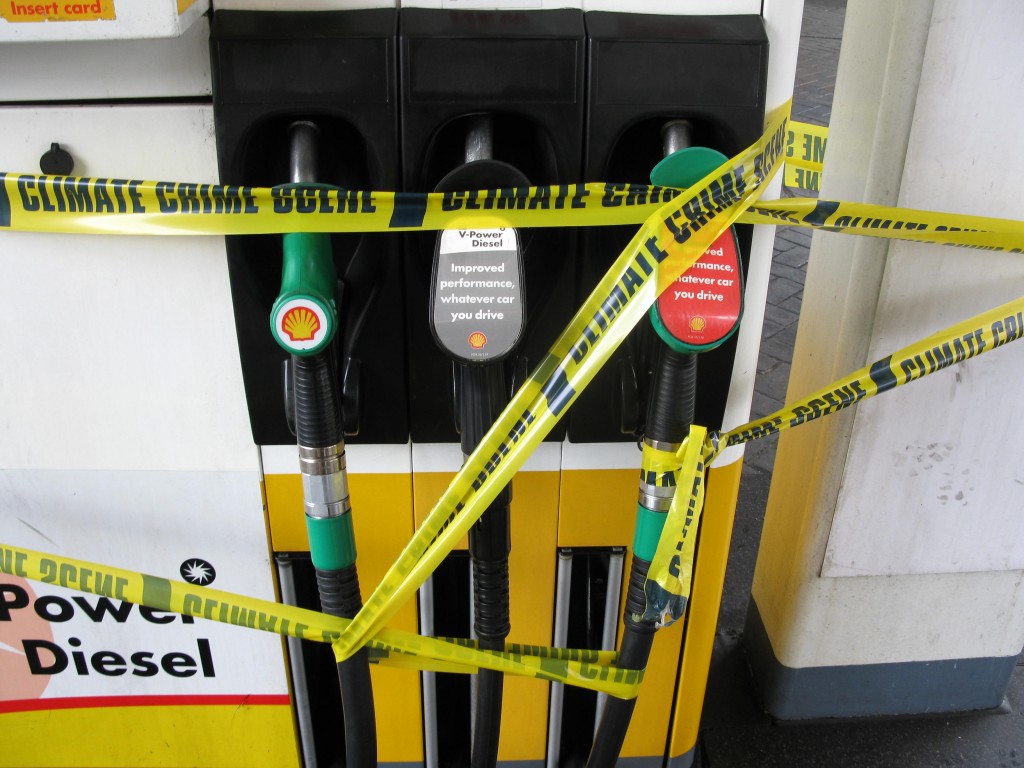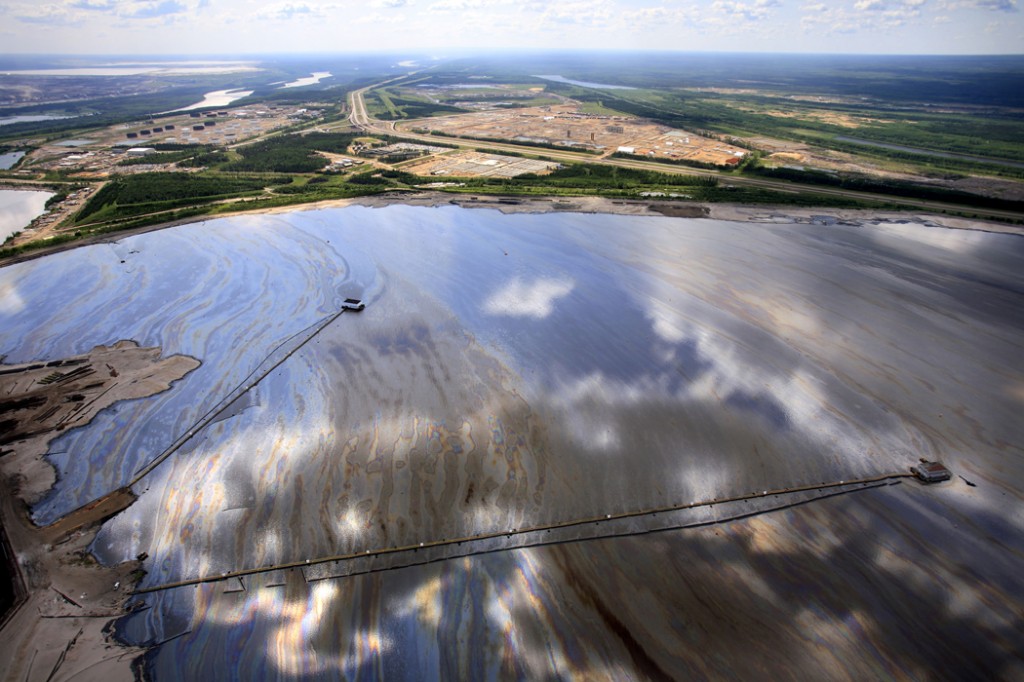
The most significant point of the day was, perhaps, when the driver of a red Ferrari tried – and failed – to cross the picket line.
With giant red signs reading CLOSED, banners strung from the roof and very noisy drums, activists shut down a Shell petrol station in Islington, North London for a few hours on Saturday. The point? To protest the oil company’s ongoing expansion in the Canadian tar sands, as well as its never-ending destruction of the Niger Delta in Nigeria, and its attempts to build a pipeline despite community opposition in Ireland, days before its annual general meeting.
The Ferrari driver did not understand at first that he would not be able pump any gas – one of very few motorists to make such a mistake that afternoon. Halting with his shiny red car on the driveway, it took several minutes for him to realise that he would suffer the inconvenience of having to drive several minutes down the road to refuel.
This was the second time activist groups, including Rising Tide and UK Tar Sands Network, shut down a gas station in the British capital. They did it the same at a BP terminal in west London a month ago in the same fashion: loud samba, bright flags, and ‘CLIMATE CRIME SCENE’ yellow tape wrapped around the pumps.

Responsible for three to five times more greenhouse gas emissions than conventional oil, the tar sands are the primary reason that Canada’s emissions rose 26 per cent from 1990 levels (and why the country is such an obstinate hurdle at international climate change negotiations). They are also the main reason that Canada claimed title as the largest supplier of foreign oil to the US in 2007.
Though it was thought that Alberta crude never flows to Europe, only south to the US and east to Asia (and China in particular), Greenpeace Canada recently disclosed that oil from the sands is in fact filling European engines as well.
The Shell demo coincided not only with the company’s AGM, but also with a tour by Alberta’s Environment Minister Rob Renner across Europe to promote the province’s ‘clean energy story’ (the significance of that last word, ‘story’ not being lost on the keen of eye).
In the wake of the Deepwater Horizon disaster, the tar sands are being promoted as a clean and safe alternative to offshore drilling – which many consider a laughable comparison, considering that tar sands extraction produces giant tailings ponds through their normal course of operations, rather than as a matter of accident.

Moreover, the Canadian government is quickly inking plans for the construction of an Enbridge pipeline to pump crude direct from the sands to the Pacific for Asian markets by 2015. Tankers twice the size of the Exxon Valdez are slated to ship oil through the narrow and rocky waters around the Charlotte Islands – routes that would be a nightmare for such large ships to navigate, say local communities. ‘We could suffer a disaster that would make the Valdez look like a walk in the park,’ said Chief Ha’eis Clare Hill, Eagle Clan Chief-in-waiting of the Gitga’at First Nation on British Columbia’s coast, visiting London last year to raise awareness about the proposed pipeline.
At a time when expansion of the sands looks more certain than ever, some feel the need to express dissent more necessary than ever.
Older people paused to congratulate the demonstrators for ‘putting their feet down’. Children joined in the dance, to the bemusement of their puzzled mothers, glancing over flyers. Even the most jaded would have found it impossible not to enjoy the rousing crescendo of noise raised for a passing wedding party – and the delight the new couple took in the cacophony of samba clanged just for them.
Nonetheless, the jaded would invariably question the purpose of such a protest and perhaps label it futile and insignificant. Granted, a tempting characterization to make given the economic and political power of the Alberta energy industry, the second largest reserve of oil in the world, responsible for one in nine jobs in the province, and increasingly host to energy and extraction interests from every corner of the globe.
Which brings us back to the age-old question: what’s the point in protesting anyways? What does a noisy rabble or a quiet sit-in accomplish in the face of power on such a scale? Was the action intended to stem the tide of Canadian tar flowing into British motors? To permanently damage the station? Or to make even the tiniest dent in Shell’s considerably sizable profits that day?
Of course not. Sometimes, the point is that the point needs to be made. Even if the momentum behind the tar sands seems unstoppable, the political power insurmountable, some will let it be known that they, at least, are neither ignorant nor wilfully complicit. And sometimes the goal is even more basic, and more immediate: to spread the word about a project that is both the largest in human history and yet so pervasively unknown.
Even if most Britons do not know about the sands, their financial contribution and the presence of its products in their engines, anyone passing by that day would have found it hard to avoid noticing the point a small group of thoughtful, committed citizens were trying to make.
Except for the man in the red Ferrari, incredulous that anything could prevent him from filling up his tank, oblivious to the world around him.
